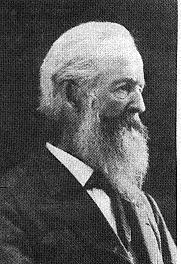
Click Here to Return To Milestones Vol 10 No 4

Emil Bott was one of Pittsburgh's principal artists of the mid-1800's. He was born in Wurtenburg, Germany and brought to America by his father Adolf Bott; they arrived as part of an aristocratic religious cult organized by a certain Count De Leon. The younger Bott lived in Phillipsburg and went to school there until he returned to Dusseldorf, Germany to study painting. At Dusseldorf, Bott developed a style that was deft, accurate and of high quality in the realistic style popular at the time.
Much of Bott's history is inaccessible today, but in 1946, John O'Conner, Jr. of Carnegie Museum discovered a Bott painting that belonged to a Park Mansions resident; the painting had been done on the door of a steamboat. O'Conner also noted that Earl Crawford, former President of the Associated Artists, was restoring a Bott canvas of steamboats. This seems to bear out the tradition that for a while Bott became a drifter, riding on the packet boats and doing decorations. This may have been profitable work, as many of those boats bore paintings by the best artists available.
Several of Bott's views of the upper Beaver River have also been found. One is reproduced in the History of Beaver County and another in the Rochester Semi-Centennial souvenir book of 1899. Bott experimented in misty gray shades, as in his painting of a church yard under moonlight. He also did a painting of a man walking in moonlight.
The painter taught art at a private school in New Brighton, Pennsylvania, operated by Miss Augusta Curtis. It has been speculated that around this time tie married Emma, the daughter of another artist, Adolph Bocking. Their daughter was the first student at Thiel College.
Before the Civil War, Bott moved to Pittsburgh. Fie lived on Fifth Avenue near where Mercy Hospital now stands. He exhibited in 1859 at the first show of the Pittsburgh Art Association. From 1865-67 he had a studio downtown and moved to a home in Lawrenceville. Soon after this he rode the packet boats, doing decorations. He remained active until 1880, and then returned to Phillipsburg to live. From his home he could watch the rivers and paint. Bott, his wife Emma, their sons Grodo and Oscar, are buried in St. Peter's Church Cemetery, Monaca, Pennsylvania.
